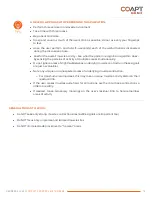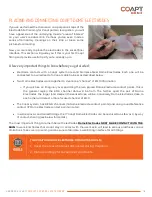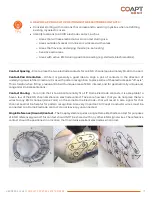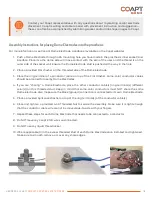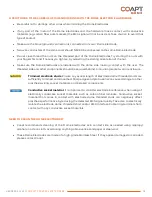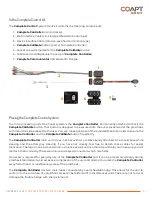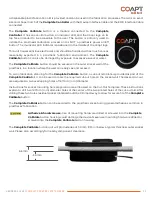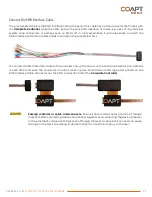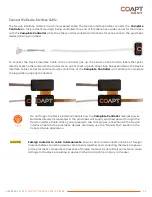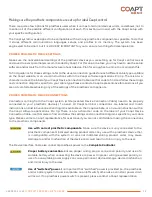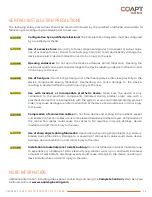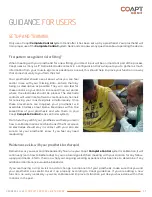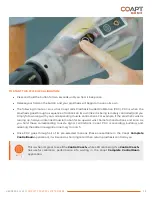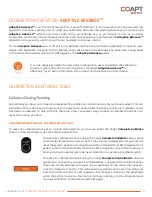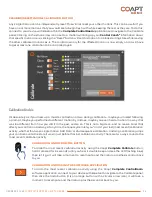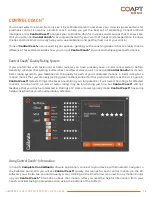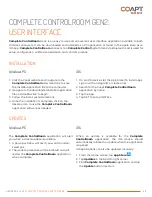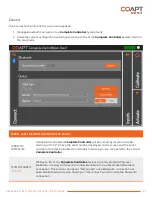
HANDBOOK (V
4.0)
COMPLETE CONTROL SYSTEM GEN2
27
GUIDANCE
FOR USERS
SETUP AND TRAINING
Only use a Coapt
Complete Control
System Gen2 after it has been set up by a prosthetist. Your prosthetist will
train proper use of the
Complete Control
System Gen2 and can answer any questions about operating the device.
First pattern recognition trial or fitting?
When meeting with your prosthetist for a new fitting, your direct input will be an important part of the process.
Coapt uses as many as 17 Dome Electrode contacts in a configuration that’s unique to you to gather as much
information from your muscle signals as possible. As a result, this should help improve your function in a way
that comes naturally to you from the start.
Your prosthetist should ask all about what you can feel
and/or move with your missing limb—so help them by
being as descriptive as possible. They will also feel for
these actions on your limb to locate and map out points
where the electrodes should be placed. The electrode
contacts will work in sets of two to create up to 8 channels
for receiving your muscle signals simultaneously. Once
these placements are mapped, your prosthetist will
assemble Stainless Steel Dome Electrodes within the
socket/liner of your prosthesis and wire them to your
Coapt
Complete Control
Gen2 controller system.
From here they will fit your prosthesis and help you learn
how to calibrate motions and functions. If the fit is correct,
all electrodes should stay in contact with your skin. Be
sure to let your prosthetist know if you feel any need
readjusting.
Maintenance visits with your prosthetist or therapist
Remember, as you wear and independently fine-tune your Coapt
Complete Control
system’s calibration, it will
continually learn how to better adapt to your natural signals. When meeting with your clinician for any follow-
up appointments, inform them on what your ongoing wearing experience has been like to determine if any
additional maintenance would be beneficial.
If you are making a clinical visit to add or change a component of your prosthesis, make sure that you and
your prosthetist are careful to set it up properly according to Coapt guidelines. If you are adding a new
function, no worry necessary—you can calibrate and improve its function just like you have done with other
motions in the past.



